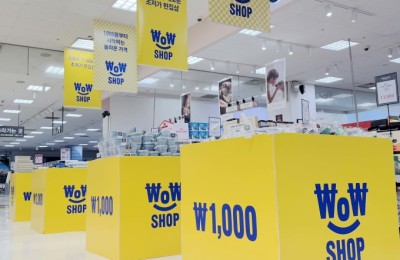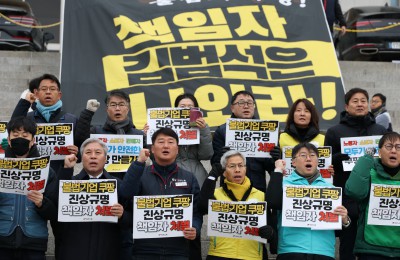At the Fourth ECB Central Banking Conference, Frankfurt, Germany
November 10, 2006
Monetary Aggregates and Monetary Policy at the Federal Reserve: A Historical Perspective
My topic today is the role of monetary aggregates in economic analysis and monetary policymaking at the Federal Reserve. I will take a historical perspective, which will set the stage for a brief discussion of recent practice.
The Federal Reserve’s responsibility for managing the money supply was established at its founding in 1913, as the first sentence of the Federal Reserve Act directed the nation’s new central bank "to furnish an elastic currency."1 However, the Federal Reserve met this mandate principally by issuing currency as needed to damp seasonal fluctuations in interest rates, and during its early years the Federal Reserve did not monitor the money stock or even collect monetary data in a systematic way.2, 3
The Federal Reserve’s first fifteen years were a period of relative prosperity, but the crash of 1929 ushered in a decade of global financial instability and economic depression. Subsequent scholarship, notably the classic monetary history by Milton Friedman and Anna J. Schwartz (1963), argued that the Federal Reserve’s failure to stabilize the money supply was an important cause of the Great Depression. That view today commands considerable support among economists, although I note that the sources of the Federal Reserve’s policy errors during the Depression went much deeper than a failure to understand the role of money in the economy or the lack of reliable monetary statistics. Policymakers of the 1930s observed the correlates of the monetary contraction, such as deflation and bank failures. However, they questioned not only their own capacity to reverse those developments but also the desirability of doing so. Their hesitancy to act reflected the prevailing view that some purging of the excesses of the 1920s, painful though it might be, was both necessary and inevitable.
In any case, the Federal Reserve began to pay more attention to money in the latter part of the 1930s. Central to these efforts was the Harvard economist Lauchlin Currie, whose 1934 treatise, The Supply and Control of Money in the United States, was among the first to provide a practical empirical definition of money. His definition, which included currency and demand deposits, corresponded closely to what we now call M1. Currie argued that collection of monetary data was necessary for the Federal Reserve to control the money supply, which in turn would facilitate the stabilization of the price level and of the economy more generally.4 In 1934, Marriner Eccles asked Currie to join the Treasury Department, and later that year, when Eccles was appointed to head the Federal Reserve, he took Currie with him. Currie’s tenure at the Federal Reserve helped to spark new interest in monetary statistics. In 1939, the Federal Reserve began a project to bring together the available historical data on banking and money. This effort culminated in 1943 with the publication of Banking and Monetary Statistics, which included annual figures on demand and time deposits from 1892 and on currency from 1860.
Academic interest in monetary aggregates increased after World War II. Milton Friedman’s volume Studies in the Quantity Theory of Money, which contained Phillip Cagan’s work on money and hyperinflation, appeared in 1956, followed in 1960 by Friedman’s A Program for Monetary Stability, which advocated that monetary policy engineer a constant growth rate for the money stock. Measurement efforts also flourished. In 1960, William J. Abbott of the Federal Reserve Bank of St. Louis led a project that resulted in a revamping of the Fed’s money supply statistics, which were subsequently published semimonthly.5 Even in those early years, however, financial innovation posed problems for monetary measurement, as banks introduced new types of accounts that blurred the distinction between transaction deposits and other types of deposits. To accommodate these innovations, alternative definitions of money were created; by 1971, the Federal Reserve published data for five definitions of money, denoted M1 through M5.6
During the early years of monetary measurement, policymakers groped for ways to use the new data.7 However, during the 1960s and 1970s, as researchers and policymakers struggled to understand the sharp increase in inflation, the view that nominal aggregates (including credit as well as monetary aggregates) are closely linked to spending growth and inflation gained ground. In 1966, the Federal Open Market Committee (FOMC) began to add a proviso to its policy directives that bank credit growth should not deviate significantly from projections; a similar proviso about money growth was added in 1970. In 1974, the FOMC began to specify "ranges of tolerance" for the growth of M1 and for the broader M2 monetary aggregate over the period that extended to the next meeting of the Committee.8
In response to House Concurrent Resolution 133 in 1975, the Federal Reserve began to report annual target growth ranges, 2 to 3 percentage points wide, for M1, M2, a still broader aggregate M3, and bank credit in semiannual testimony before the Congress. In an amendment to the Federal Reserve Act in 1977, the Congress formalized the Federal Reserve’s reporting of monetary targets by directing the Board to "maintain long run growth of monetary and credit aggregates … so as to promote effectively the goals of maximum employment, stable prices, and moderate long-term interest rates."9 In practice, however, the adoption of targets for money and credit growth was evidently not effective in constraining policy or in reducing inflation, in part because the target was not routinely achieved.10
The closest the Federal Reserve came to a "monetarist experiment" began in October 1979, when the FOMC under Chairman Paul Volcker adopted an operating procedure based on the management of non-borrowed reserves.11 The intent was to focus policy on controlling the growth of M1 and M2 and thereby to reduce inflation, which had been running at double-digit rates. As you know, the disinflation effort was successful and ushered in the low-inflation regime that the United States has enjoyed since. However, the Federal Reserve discontinued the procedure based on non-borrowed reserves in 1982. It would be fair to say that monetary and credit aggregates have not played a central role in the formulation of U.S. monetary policy since that time, although policymakers continue to use monetary data as a source of information about the state of the economy.
Why have monetary aggregates not been more influential in U.S. monetary policymaking, despite the strong theoretical presumption that money growth should be linked to growth in nominal aggregates and to inflation? In practice, the difficulty has been that, in the United States, deregulation, financial innovation, and other factors have led to recurrent instability in the relationships between various monetary aggregates and other nominal variables. For example, in the mid-1970s, just when the FOMC began to specify money growth targets, econometric estimates of M1 money demand relationships began to break down, predicting faster money growth than was actually observed. This breakdown--dubbed "the case of the missing money" by Princeton economist Stephen Goldfeld (1976)--significantly complicated the selection of appropriate targets for money growth. Similar problems arose in the early 1980s--the period of the Volcker experiment--when the introduction of new types of bank accounts again made M1 money demand difficult to predict.12 Attempts to find stable relationships between M1 growth and growth in other nominal quantities were unsuccessful, and formal growth rate targets for M1 were discontinued in 1987.
Problems with the narrow monetary aggregate M1 in the 1970s and 1980s led to increased interest at the Federal Reserve in the 1980s in broader aggregates such as M2. Econometric methods were also refined to improve estimation and to accommodate more-complex dynamics in money demand equations. For example, at a 1988 conference at the Federal Reserve Board, George Moore, Richard Porter, and David Small presented a new set of M2 money demand models based on an "error-correction" specification, which allowed for transitory deviations from stable long-run relationships (Moore, Porter, and Small, 1990). One of these models, known as the "conference aggregate" model, remains in use at the Board today. About the same time, Board staff developed the so-called P* (P-star) model, based on M2, which used the quantity theory of money and estimates of long-run potential output and velocity (the ratio of nominal income to money) to predict long-run inflation trends. The P* model received considerable attention both within and outside the System; indeed, a description of the model was featured in a front-page article in the New York Times. 13
Unfortunately, over the years the stability of the economic relationships based on the M2 monetary aggregate has also come into question. One such episode occurred in the early 1990s, when M2 grew much more slowly than the models predicted. Indeed, the discrepancy between actual and predicted money growth was sufficiently large that the P* model, if not subjected to judgmental adjustments, would have predicted deflation for 1991 and 1992. Experiences like this one led the FOMC to discontinue setting target ranges for M2 and other aggregates after the statutory requirement for reporting such ranges lapsed in 2000.
As I have already suggested, the rapid pace of financial innovation in the United States has been an important reason for the instability of the relationships between monetary aggregates and other macroeconomic variables.14 In response to regulatory changes and technological progress, U.S. banks have created new kinds of accounts and added features to existing accounts. More broadly, payments technologies and practices have changed substantially over the past few decades, and innovations (such as Internet banking) continue. As a result, patterns of usage of different types of transactions accounts have at times shifted rapidly and unpredictably.
Various special factors have also contributed to the observed instability. For example, between one-half and two-thirds of U.S. currency is held abroad. As a consequence, cross-border currency flows, which can be estimated only imprecisely, may lead to sharp changes in currency outstanding and in the monetary base that are largely unrelated to domestic conditions.15, 16
The Board staff continues to devote considerable effort to modeling and forecasting velocity and money demand. The standard model of money demand, which relates money held to measures of income and opportunity cost, has been extended to include alternative measures of money and its determinants, to accommodate special factors and structural breaks, and to allow for complex dynamic behavior of the money stock.17 Forecasts of money growth are based on expert judgment with input from various estimated models and with knowledge of special factors that are expected to be relevant. Unfortunately, forecast errors for money growth are often significant, and the empirical relationship between money growth and variables such as inflation and nominal output growth has continued to be unstable at times.18
Despite these difficulties, the Federal Reserve will continue to monitor and analyze the behavior of money. Although a heavy reliance on monetary aggregates as a guide to policy would seem to be unwise in the U.S. context, money growth may still contain important information about future economic developments. Attention to money growth is thus sensible as part of the eclectic modeling and forecasting framework used by the U.S. central bank.
References
Anderson, Richard G. and Kenneth A. Kavajecz (1994). "A Historical Perspective on the Federal Reserve’s Monetary Aggregates: Definition, Construction and Targeting (PDF 7.4 MB)," Federal Reserve Bank of St. Louis Review, March/April, pp. 1-31.
Board of Governors of the Federal Reserve System (1943). Banking and Monetary Statistics, 1914-1941. Washington: Board of Governors of the Federal Reserve System.
---------- (1960). "A New Measure of the Money Supply," Federal Reserve Bulletin, vol. 46 (October), pp.. 102-23.
---------- (1976). Banking and Monetary Statistics, 1941-1970. Washington: Board of Governors of the Federal Reserve System.
----- (1998). Federal Reserve Act and Other Statutory Provisions Affecting the Federal Reserve System. Washington: Board of Governors of the Federal Reserve System.
Bremner, Robert P. (2004). Chairman of the Fed: William McChesney Martin Jr. and the Creation of the American Financial System. New Haven: Yale University Press.
Carpenter, Seth and Joe Lange (2003). "Money Demand and Equity Markets." Federal Reserve Board Finance and Economics Discussion Series, 2003-3. Washington: Board of Governors of the Federal Reserve System, February.
Currie, Lauchlin (1935). The Supply and Control of Money in the United States, 2nd ed. Cambridge: Harvard University Press.
-----------, ed. (1956). Studies in the Quantity Theory of Money. Chicago: University of Chicago Press.
Friedman, Milton (1960). A Program for Monetary Stability. New York: Fordham University Press.
Friedman, Milton and Anna J. Schwartz. (1963). A Monetary History of the United States, 1867-1960. Princeton: Princeton University Press.
Goldfeld, Stephen M. (1976). "The Case of the Missing Money." Brookings Papers on Economic Activity, 3:1976, pp. 683-739.
Hallman, Jeffrey J., Richard D. Porter and David H. Small (1991). "Is the Price Level Tied to the M2 Monetary Aggregate in the Long Run?" American Economic Review, 81(September), pp. 841-858.
Humphrey, Thomas M. (1986). "The Real Bills Doctrine (PDF 1.2 MB)," in Thomas M. Humphrey, Essays on Inflation. Richmond: Federal Reserve Bank of Richmond.
Judson, Ruth and Seth Carpenter (2006). "Modeling Demand for M2: A Practical Approach," unpublished manuscript, Board of Governors of the Federal Reserve System, Division of Monetary Affairs, October.
Kilborn, Peter T. (1989). "Can Inflation Be Predicted? Federal Reserve Sees a Way," New York Times, June 13.
Mankiw, N. Gregory and Jeffrey A. Miron (1986). "The Changing Behavior of the Term Structure of Interest Rates," Quarterly Journal of Economics, 101(2), pp. 211-228.
Meltzer, Allan H. (2003). A History of the Federal Reserve. Volume 1: 1913-1951. Chicago: University of Chicago Press.
Moore, George R., Richard D. Porter, and David H. Small (1990). "Modeling the Disaggregated Demands for M2 and M1: The U.S. Experience in the 1980s," in Peter Hooper et. al., eds., Financial Sectors in Open Economies: Empirical Analysis and Policy Issues. Washington: Board of Governors of the Federal Reserve System, pp. 21-105.
O’Brien, Yueh-Yun C. (2005). "The Effects of Mortgage Prepayments on M2." Federal Reserve Board Finance and Economics Discussion Series, 2005-43.
U.S. Department of the Treasury (2006). The Use and Counterfeiting of United States Currency Abroad, Part 3 (PDF 601 KB). Washington: Department of the Treasury.
Footnotes
1. Board of Governors of the Federal Reserve System (1998), 1-001. In his recent history of the Federal Reserve, Allan Meltzer (2003, p. 66) notes of some of the Act’s proponents that: "[o]ne of their principal aims was to increase the seasonal response, or elasticity, of the note issue by eliminating the provisions of the National Banking Act that tied the amount of currency to the stock of government bonds."
2. See Mankiw and Miron (1986) for a discussion of the Fed’s seasonal interest-rate smoothing. The Federal Reserve did publish data on the issuance of Federal Reserve notes from its inception. Federal Reserve notes were only part of total currency in circulation, however, the remainder being made up of national bank notes, United States notes, Treasury notes, gold and silver certificates, and gold and silver coin. Beginning in 1915, the Federal Reserve Bulletin included data on currency that had been collected by the Treasury and data on total bank deposits that had been collected by the Office of the Comptroller of the Currency as a byproduct of its regulatory role, but publication was irregular.
3. Indeed, the Federal Reserve’s adherence to the real bills doctrine--which counseled against active monetary management in favor of supplying money only as required to meet "the needs of trade"--gave the new institution little reason to pay attention to changes in the money stock. See Humphrey (1986) for a history of the real bills doctrine. The constraints of the gold standard also restricted (without entirely precluding) active monetary management by the Federal Reserve.
4. In the second edition of his book, Currie (1935) wrote: "The achievement of desirable objectives … rests entirely upon the effectiveness of control. The achievement, for example, of the objective of a price level varying inversely with the productive efficiency of society demands a highly energetic central banking policy and a high degree of effectiveness of monetary control… Even for the achievement of the more modest objective of lessening business fluctuations by monetary means, the degree of control of the central bank is of paramount importance." (pp. 3-4).
5. Board of Governors of the Federal Reserve System (1960).
6. In 1971, M1 was currency and demand deposits at commercial banks. M2 was M1 plus commercial bank savings and small time deposits, and M3 was M2 plus deposits at mutual savings banks, savings and loans, and credit unions; data from the latter type of institution were available only monthly. M4 was M2 plus large time deposits, and M5 was M3 plus large time deposits. Changes in definitions make it difficult to track the historical development of the various monetary aggregates. Approximately, the 2006 definition of M1 is equivalent to this older definition, the 2006 definition of M2 is equivalent to the older definition of M3, and the definition of M3 at its date of last publication was equivalent to the older definition of M5. M4 and M5 were dropped in a 1980 redefinition of the monetary aggregates. See Board of Governors of the Federal Reserve System (1976), pp. 10-11 and Anderson and Kavajecz (1994).
7. For instance, in late 1959 and early 1960, money growth declined as other economic indicators rose. The minutes of the December 1959 FOMC meeting report Chairman Martin as saying, "I am unable to make heads or tails of the money supply," but those of the February 1960 meeting record his comment that "the System ought to be looking at the growth of the money supply." For further discussion, see Bremner (2004), pp. 141-142.
8. M2 now includes currency and demand deposits (the components of M1) plus time deposits, savings deposits, and non-institutional money market funds.
9. Board of Governors of the Federal Reserve System (1998), 1-017
10. Monetarists criticized the use of multiple targets, rather than a single objective. Another object of criticism was "base drift," a set of practices that had the effect of re-setting the base from which money growth targets were calculated when the growth of one or more monetary aggregates exceeded the upper end of the Federal Reserve’s target range.
11. Whether the Federal Reserve’s policies under Chairman Volcker were "truly" monetarist was a much-debated question at the time.
12. The new accounts included negotiable-order-of-withdrawal (NOW) accounts and money market deposit accounts.
13. Hallman, Porter, and Small (1991) and Kilborn (1989).
14. Another possible explanation for this instability is the Goodhart-Lucas law, which says that any empirical relationship that is exploited for policy purposes will tend to break down. This law probably has less applicability in the United States than in some other countries, as the Federal Reserve has not systematically exploited the relationships of money to output or inflation, except perhaps to a degree in 1979-82.
15. For a recent summary, see U.S. Department of the Treasury (2006).
16. As another example, U.S. regulations require servicers of mortgage-backed securities to hold mortgage prepayments in deposits counted as part of M2 before disbursing the funds to investors. A wave of mortgage refinancing and the resulting prepayments can thus have significant effects on M2 growth that are only weakly related to overall economic activity. See O’Brien (2005) for more discussion.
17. See Judson and Carpenter (2006) for a summary. A special factor that helps to explain some episodes of variable money demand is stock market volatility (Carpenter and Lange, 2003).
18. A recent example of instability occurred in the fourth quarter of 2003, when M2 shrank at the most rapid rate since the beginning of modern data collection in 1959 without any evident effects on prices or nominal spending. Subsequent analysis has explained part of the decline in M2 (the transfer of liquid funds into a recovering stock market was one possible cause), and data revisions have eliminated an additional portion of the decline, but much of the drop remains unexplained even well after the fact.
























